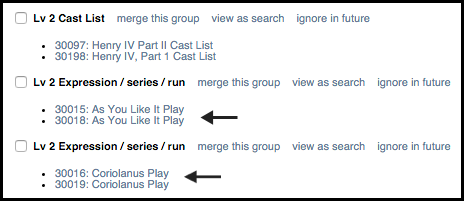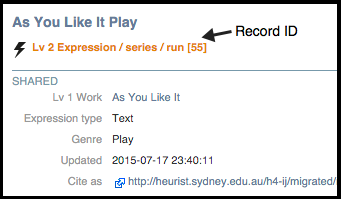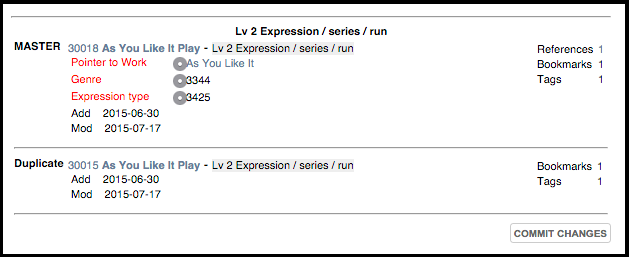Find Duplicate Records
Administration | Utilities | Find Duplicate Records

This scan finds possible duplicated records in your database, which you can view, merge or delete as required.
Note. You can modify the precision and scope of the match criteria to tailor the results.
The result of the scan shows possible candidates for duplicate records, grouped according to record type.
If required, update the match criteria, as follows:
- Change the Matching Precision value (10 by default). Potential duplicated records are determined according to how many characters in the record names match (this is called 'metaphone' matching, based on similar-sounding names). You can set the precision of the match by changing the number of matching characters to broaden or narrow the search: the larger the precision number the fewer matches that are found.
- Select the Do record matching across record types checkbox. By default, records are matched within their record type. To search for record titles across record types, select this checkbox. This search will take longer.
- Select the Do person matching by surname first checkbox.
Review the updated results and take the appropriate action, as follows:
View potential duplicate record details directly

Click the individual record link (use the record ID to identify records) to display the record details. To update the record (you cannot edit the record here), find and edit the record via the Search Results pane.
Remove duplicates

If you decide that a group of records are not duplicates, or you just wish to ignore the duplication, select the relevant checkboxes for the record type group and click ignore in future. The entries are removed and will not appear in subsequent duplicate searches.
To view potential duplicates as search

Select the checkboxes for the relevant record type group and click view as search. The results (i.e. potential duplicates) are listed on the Saved Filters Pane.
Review and edit the records as required, either individually or via the Record Duplicate screen.
To merge duplicates

This option combines duplicate records. One record MUST be selected as a master record and there must be at least one duplicate selected. Processing duplicates allows you to merge data with the master record. Bookmarks, Tags and Relationships from deleted records are added to the master record. None of these data are duplicated if they already exist in the master record.
If you decide that a group of records do represent duplicates and should be merged then: select the relevant checkboxes for the record type group and click Merge this group.
This lists all duplicate records for your selection, along with details of the record usage. Heurist selects one record by default that is most likely to be the master record based on the number of bookmarks, Tags etc.):

If required, select an alternative duplicate record to be the master record. Select the Duplicate checkbox for all other records that you wish to merge with the selected master record and remove. All unchecked records will not be merged nor removed.
When ready, click Merge Duplicates (you will still have a chance to continue or quit this process)

This shows the potential result of the merger if you go ahead. Review these details.
Important. Selecting a record to merge with the master record will merge its contents with the master record and then DELETE the original record. Bookmarks, tags and relationships from deleted records are added to the master record. None of these data are duplicated if they already exist in the master record.
Select the data items that should be retained, added or replaced in the master records. Repeatable (multi-valued) fields are indicated by checkboxes and single value fields are indicated by radio buttons.
When ready, click Commit Changes to process the changes to the database (this step cannot be undone). The results of the merger are shown. Review the master record to verify the changes.

Click Close Window to return to the main Duplicate Record screen to review other potential duplicates.
Created with the Personal Edition of HelpNDoc: Full-featured Documentation generator